Are there places that you’ve been meaning to visit for years? We faced that same situation right in our backyard. The Shawnee Indian Mission has been a destination we have discussed visiting for quite some time. It seems like some other stop would always push this place to the back burner. We finally said “enough is enough” and planned a stopover at this local historical attraction. Without much research, we arrived with open minds and eager to learn about these indigenous people.
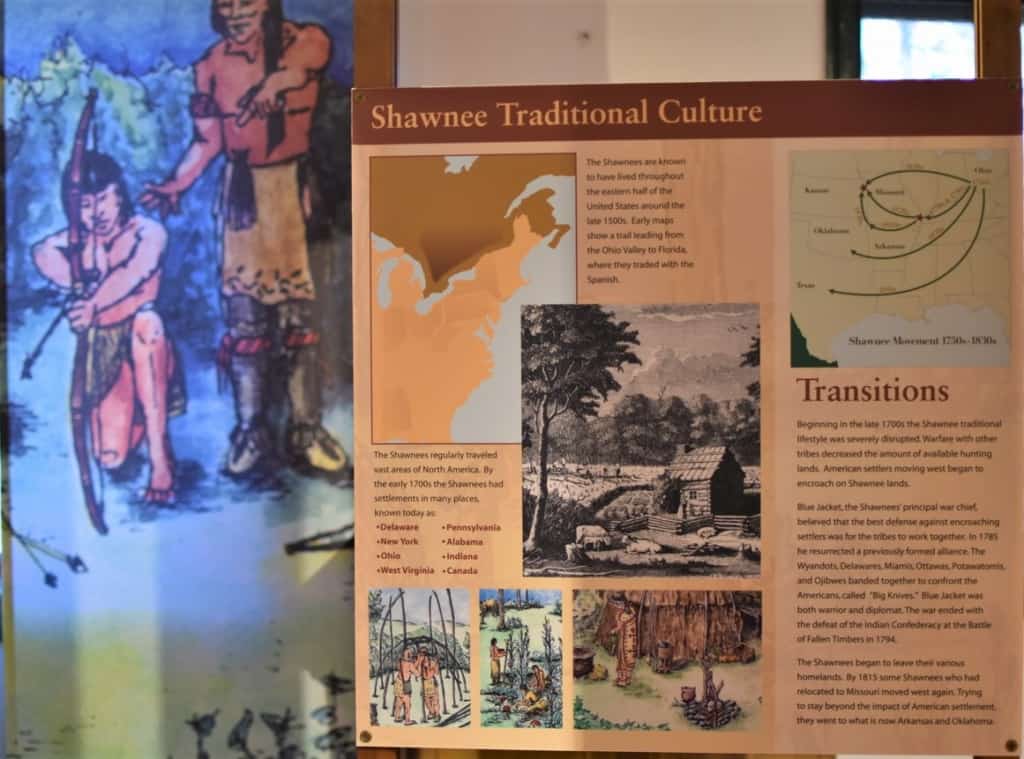
The Shawnee Tribe
We discovered that the first floor of the museum focuses on the Shawnee people. By the 1600s, the Shawnee people occupied the woodlands around Ohio and Pennsylvania. During the summer, they lived a sedentary lifestyle, choosing to raise and tend crops. Fishing and hunting were also an important part of their lives. Their lodging was often bark-covered houses and a village would contain forty to one hundred homes. They are also associated with the creation of earthen mounds, which were part of their religious and social life. Winter would find them breaking into family groups that spent time hunting. The Shawnee share connections with the Kickapoo, and Delaware tribes and established a close friendship with the Wyandot.
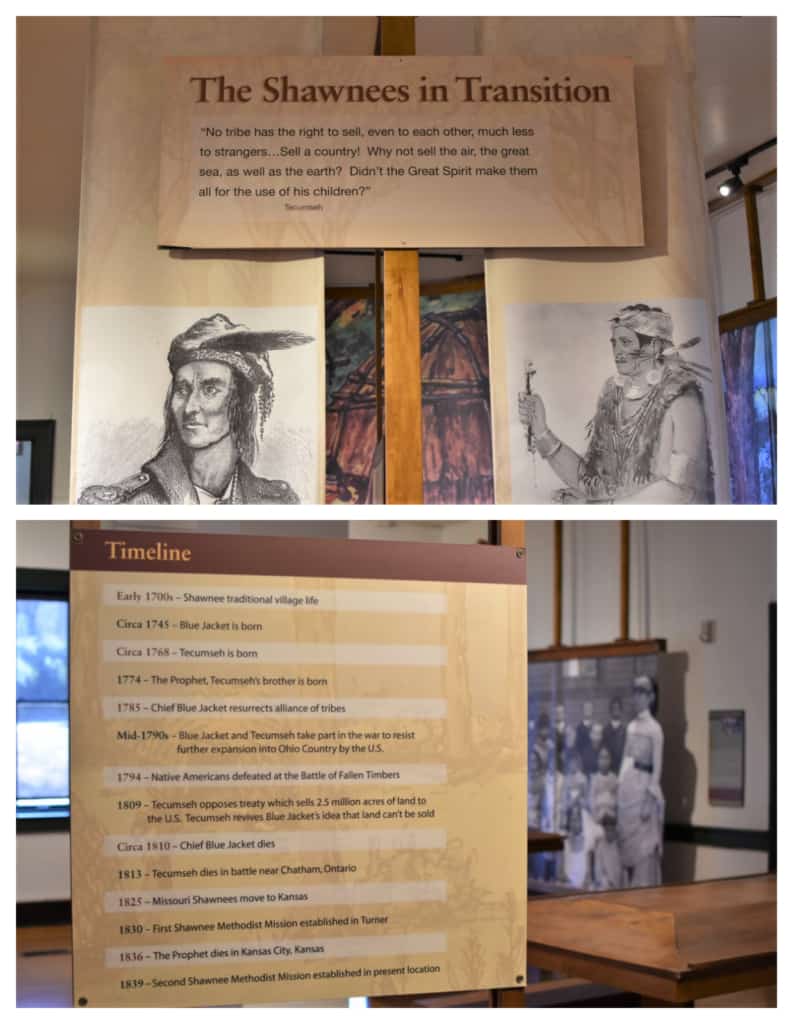
Expanding Territory
In 1630, attacks from the Iroquois forced the Shawnee to seek new lands. The various clans scattered to the south and west. It was this action that gained the tribe a reputation as wanderers, which was done out of necessity. As the power of the Iroquois tribe waned, some of the Shawnee clans returned to the Ohio Valley. European traders saw an opportunity for trade and made allies with the native people. As trade expanded, the influx of alcohol created a negative impact on the tribe. The Shawnee were forced to surrender large tracts of land in Ohio, which led to ill will against the Americans. It would be Shawnee Chief Tecumseh who would unite the tribes in a war that culminated with the Battle of Tippecanoe.
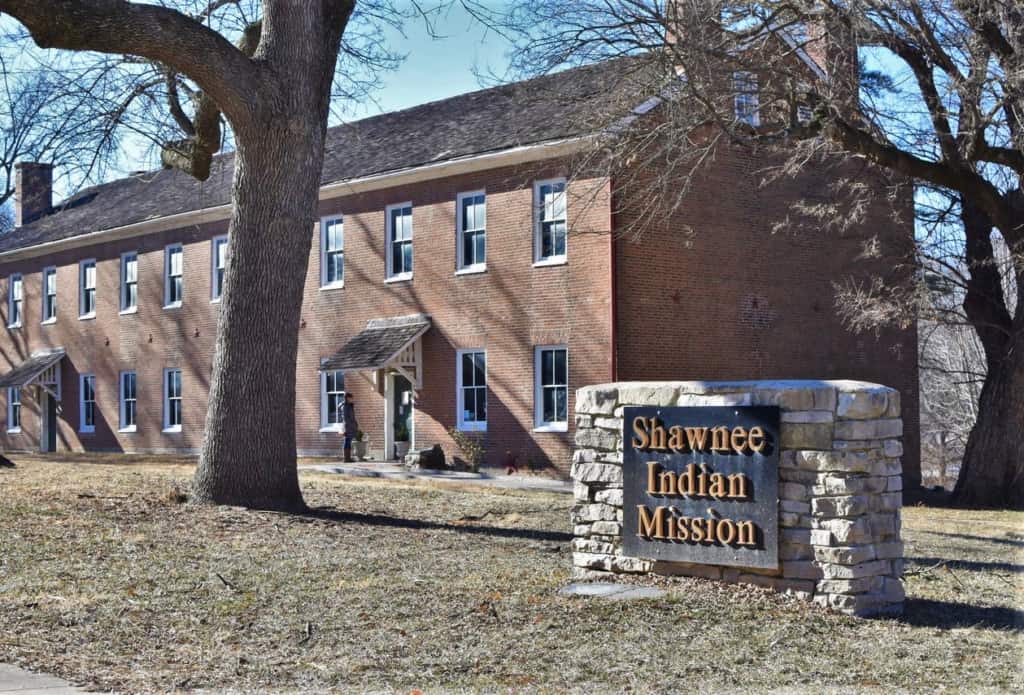
Shawnee Indian Mission
It was only about 50 years after America became a nation before a large land grab would swing into full gear. In 1830, President Andrew Jackson signed the Indian Removal Act. This was designed to vacate native tribes from their ancestral lands and relocate them west of the Mississippi River. The Shawnee were moved to eastern Kansas and tribal leadership requested the US government build a school. The original Methodist mission was constructed in Turner, Kansas. Within a few years, the need for a larger facility led to the construction of the Shawnee Indian Manual Labor Boarding School. It became one of the first boarding schools built on the lands purchased in the Louisiana Purchase.
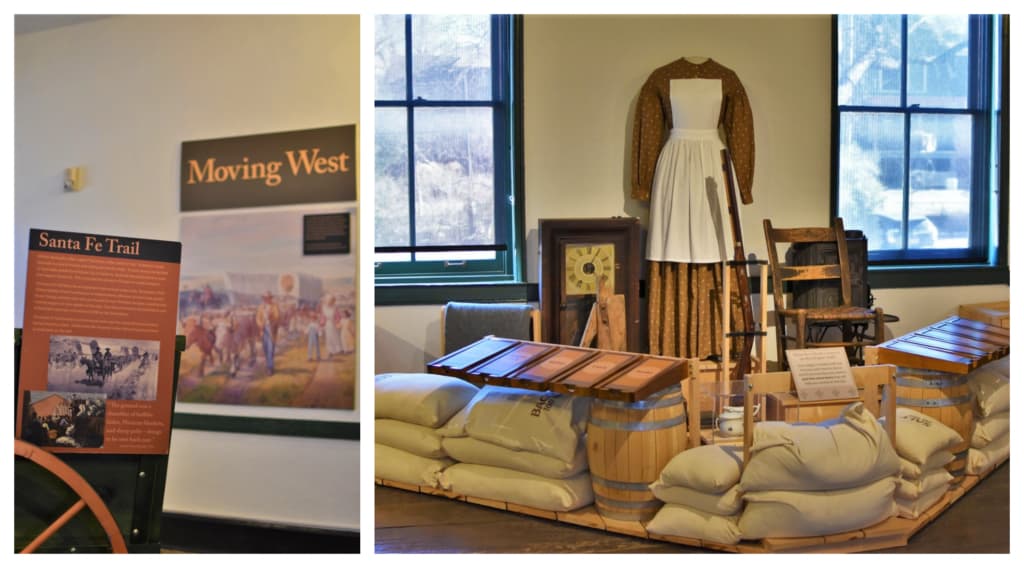
Just Passing Through
We soaked up more of the lore of the Shawnee people, before moving to the second floor. Here we found spaces designed to showcase other aspects of life in the 1800s. The Kansas City region was a hub for people seeking greener pastures to the west. The Oregon, California, and Santa Fe trails all passed through this region. Some of our previous trips, like a visit to Council Grove, had highlighted these famous pathways. The Shawnee Indian Mission has an interactive display designed to educate the public about the difficulties faced by these pioneers. One of the exhibits asks guests to select the items that were considered necessities for the journey west.
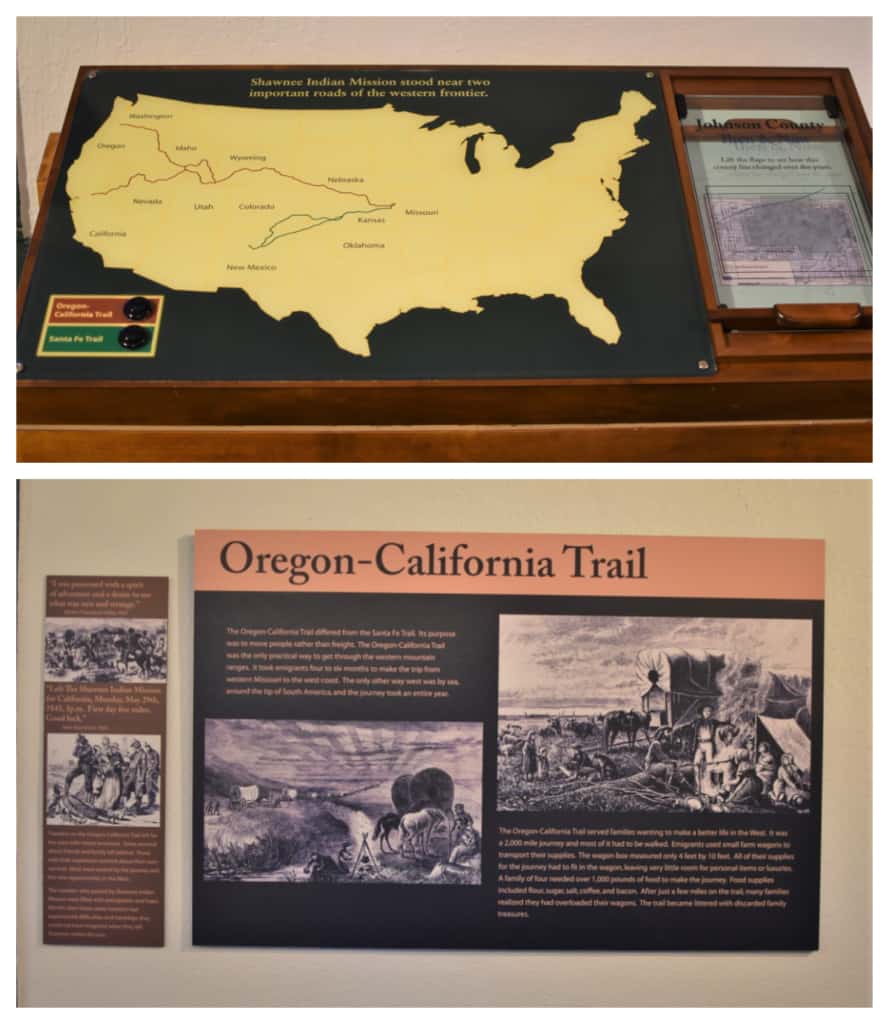
Hard Road Ahead
As we explored the exhibits, we thought about what it would have been like to be one of those adventurers. Life in the east would have been fairly normal and filled with the pleasantries and creature comforts expected in a home setting. Now imagine trying to pack all of this up and move it across the rivers, plains, and mountains. It wouldn’t take long before you would find yourself thinning the wagon of unneeded weight. Goodbyes would be difficult as you ejected your family china or that grandfather clock brought from the Old World. This would be just one of the hard decisions made along your journey.
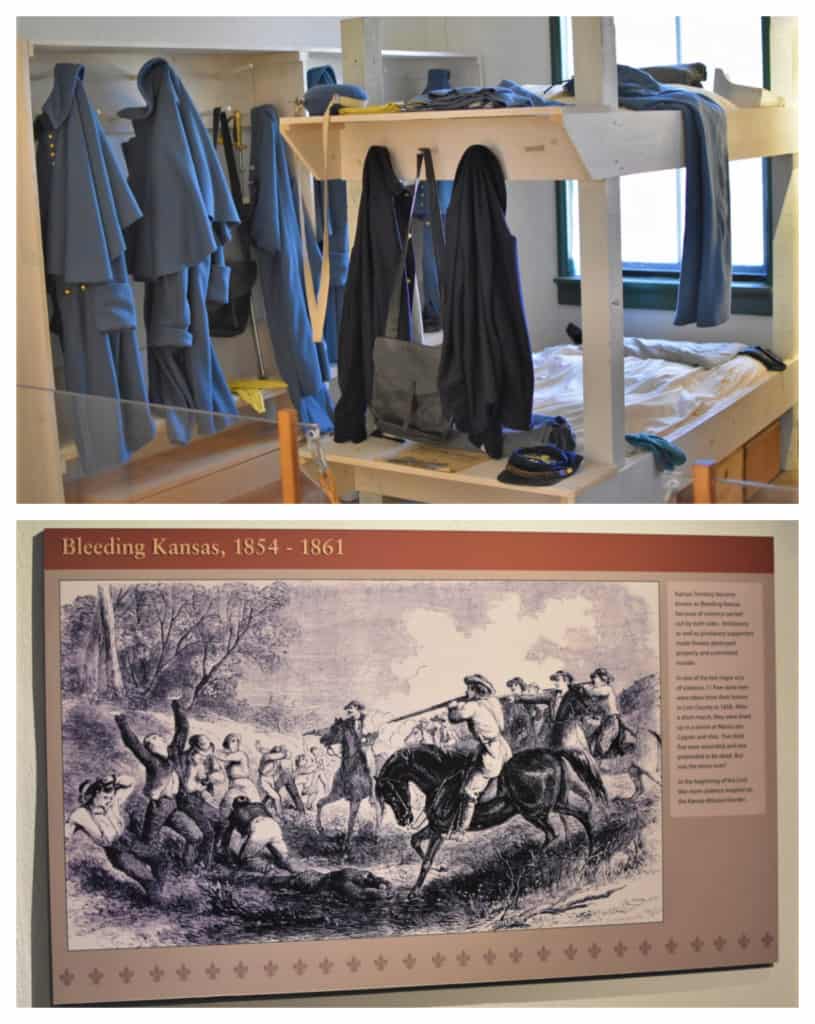
Turmoil in the Heartland
We continued exploring the second-floor exhibits and came to an area focused on a period of great turmoil. Those who were raised in or near the Kansas City region are well aware of the Border War. The time leading up to the Civil War was filled with murderous acts committed in the name of freedom. Some would fight for their right to continue the act of slavery. Others would call on the side of abolition to justify their actions. Many historians feel that the skirmishes and battles along the Kansas-Missouri border added significantly to the atmosphere of war.
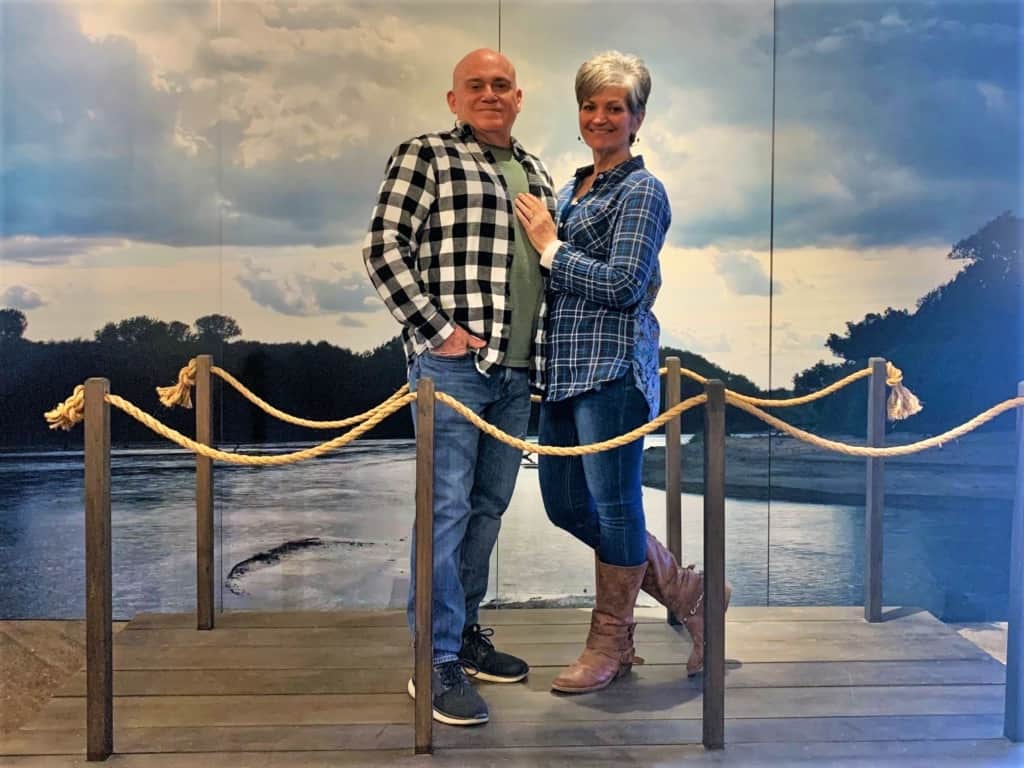
Finding Hidden Kansas History
Our visit to the Shawnee Indian museum reminded us that there are still places to discover in our backyard. While we will continue to showcase destinations all around North America, we will also renew our commitment to the Kansas City region. We know that a large number of our readers are locals, who have stuck with us for years. There are not enough words to express our appreciation for your commitment. Please let us know of any sites you’d like to see us visit and we will put them on our “must-see” list. We love exploring new places and sharing the experiences with all of you.


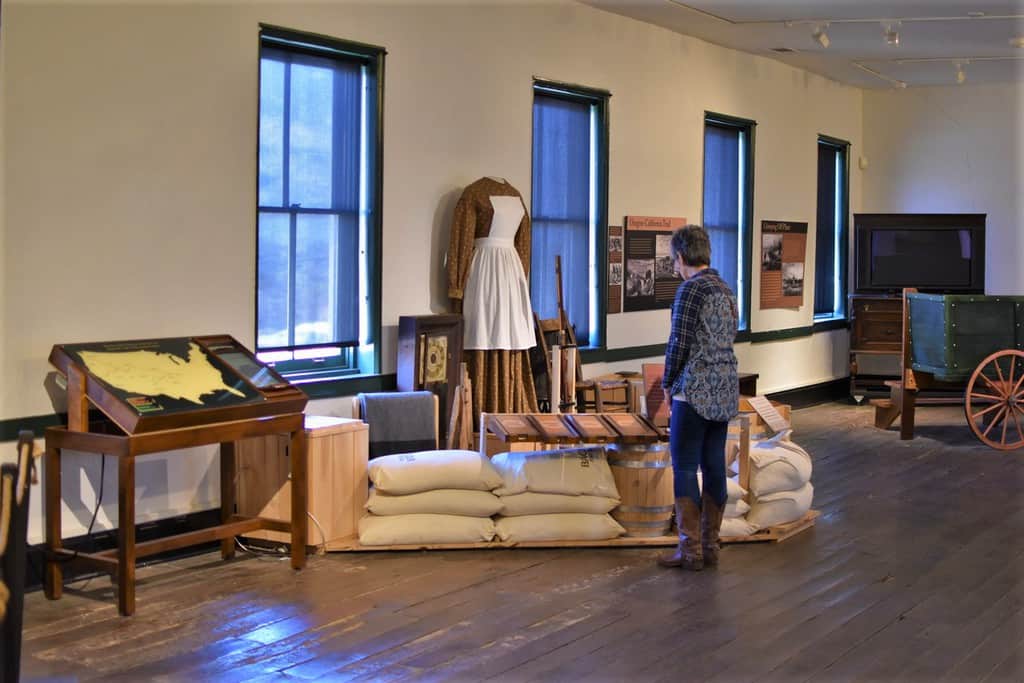
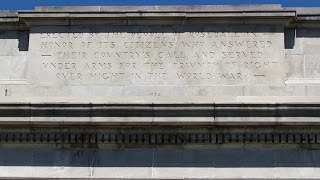
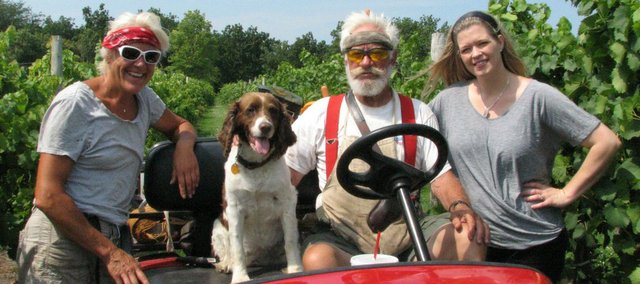

I like the picture of the two of you at the end. The other also looks interesting.
It was certainly an unexpected treat for us to find this so close to home.